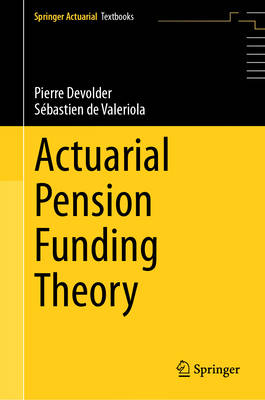
- Afhalen na 1 uur in een winkel met voorraad
- Gratis thuislevering in België vanaf € 30
- Ruim aanbod met 7 miljoen producten
- Afhalen na 1 uur in een winkel met voorraad
- Gratis thuislevering in België vanaf € 30
- Ruim aanbod met 7 miljoen producten
Zoeken
Omschrijving
This book offers a broad and up-to-date account of the actuarial principles of pensions. Divided into three parts, it includes discussions on both social security schemes and private pension funds, and aspects of life insurance. The first part presents the general principles of pension schemes. After a general look at the pension issue and some basic elements of demography, the main methods of financing a pension plan, for example pay-as-you-go or funding, are described in a unified way. The second part gives a detailed analysis of the pay-as-you-go methodologies for social security schemes. Recent concepts such as notional defined contribution plans, hybrid schemes and point systems are studied from an actuarial perspective. The final part, devoted to funding techniques, examines the main individual and collective funding methods, such as unit credit and aggregate cost, and looks at the management of actuarial gains and losses. This is the first book to give a joint and up-to-date analysis of public and private pension schemes from an actuarial point of view. Aimed primarily at undergraduate and graduate students, and actuaries involved in pensions, it will also be useful to mathematicians, economist, accountants, and anyone with basic quantitative training who is interested in pension issues.
Specificaties
Betrokkenen
- Auteur(s):
- Uitgeverij:
Inhoud
- Aantal bladzijden:
- 272
- Taal:
- Engels
- Reeks:
Eigenschappen
- Productcode (EAN):
- 9783031852671
- Verschijningsdatum:
- 6/09/2025
- Uitvoering:
- Hardcover
- Formaat:
- Genaaid
- Afmetingen:
- 156 mm x 234 mm
- Gewicht:
- 589 g

Alleen bij Standaard Boekhandel
+ 213 punten op je klantenkaart van Standaard Boekhandel
Beoordelingen
We publiceren alleen reviews die voldoen aan de voorwaarden voor reviews. Bekijk onze voorwaarden voor reviews.








